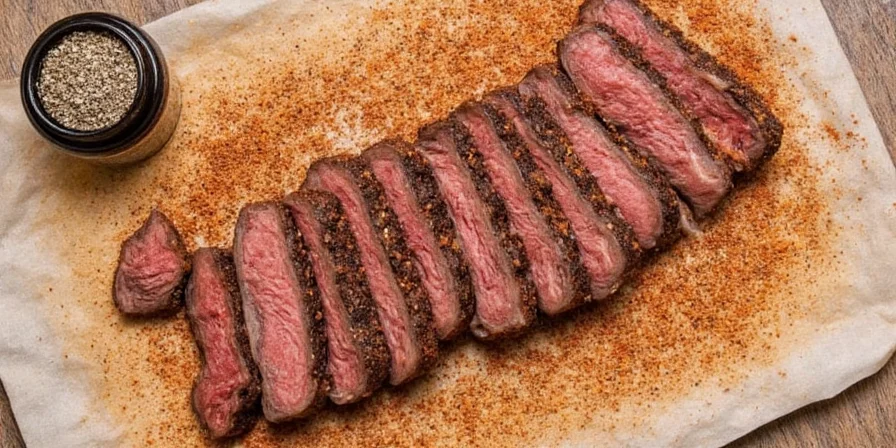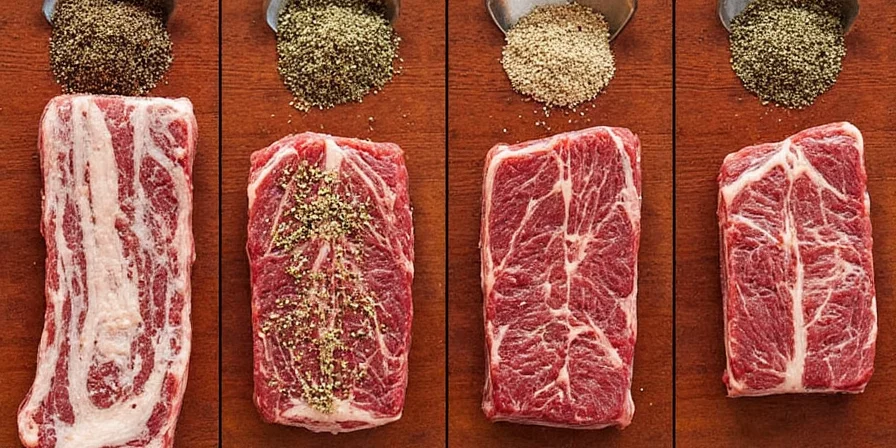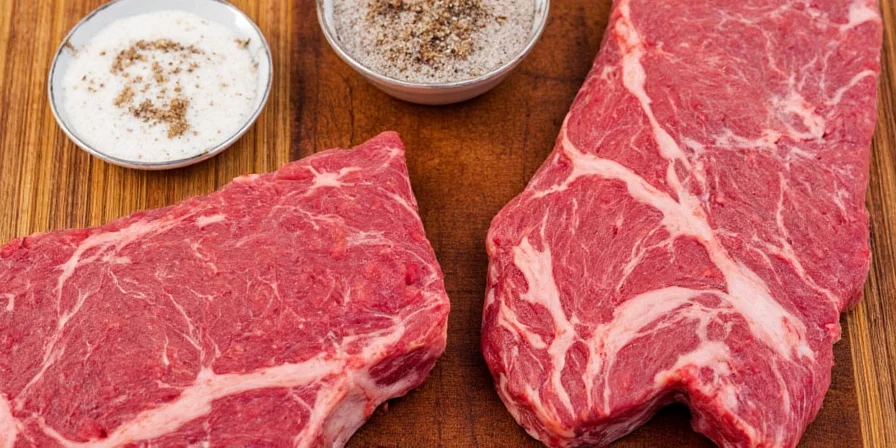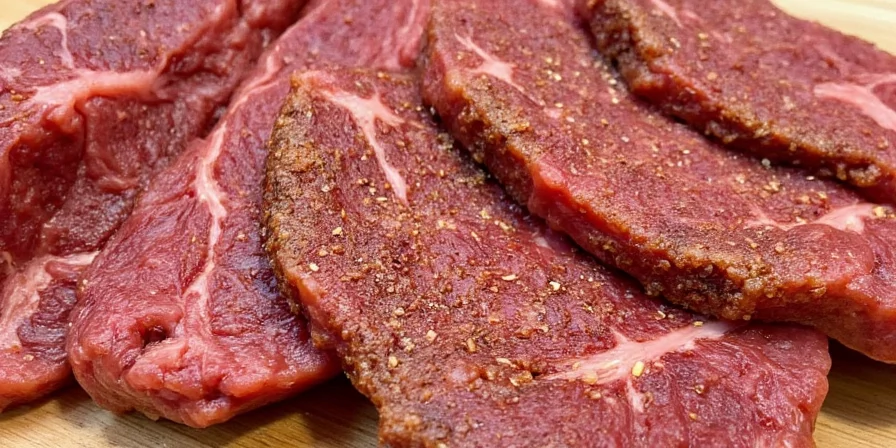Seasoning beef properly starts with just two ingredients: kosher salt and freshly ground black pepper. For most home cooks, the simplest effective method is to generously coat both sides of your steak with 1 teaspoon of kosher salt per pound of meat 45 minutes before cooking, then add 1–2 turns of freshly ground black pepper right before it hits the pan or grill. This basic approach delivers consistently delicious results without special equipment or hard-to-find ingredients.

How to Season Beef: The Simple Beginner's Method
If you're new to cooking beef, follow these three straightforward steps for restaurant-quality results every time:
- Salt early: Apply 1 teaspoon of kosher salt per pound of meat 30–60 minutes before cooking. This allows the salt to penetrate while drawing out excess moisture for better searing.
- Dry the surface: Pat the meat dry with paper towels right before cooking to ensure a perfect crust forms.
- Pepper last: Add freshly ground black pepper only moments before cooking, as prolonged exposure to heat can make it bitter.
| Beef Cut | Salt Amount (per pound) | Timing Before Cooking |
|---|---|---|
| Steak (1-1.5") | 1 tsp kosher salt | 45 minutes |
| Thick Steak (1.5"+) | 1.25 tsp kosher salt | 2–24 hours (dry brine) |
| Ground Beef | 1/2 tsp kosher salt | Just before cooking |
| Roasts | 1.5 tsp kosher salt | 24 hours (dry brine) |
Why This Basic Method Works: Science Made Simple
Salt does two important jobs: it enhances flavor throughout the meat and helps create that perfect brown crust when searing. When you salt early, it dissolves and gets absorbed into the surface layers. As you cook, the surface dries properly, allowing temperatures to reach the 300°F+ needed for the Maillard reaction – that magical process creating hundreds of flavor compounds. Pepper burns easily, which is why it's added at the last minute.
Common Beef Seasoning Mistakes to Avoid
- Seasoning too late: Salt needs time to work its magic – adding right before cooking only flavors the surface
- Using table salt instead of kosher: Table salt is denser and can make your steak too salty (use 3/4 as much if substituting)
- Adding sugar too early: Sugars burn at lower temperatures – save sweet elements for finishing sauces
- Seasoning frozen meat: Ice crystals prevent proper adhesion and create steam pockets
Level Up: Advanced Beef Seasoning Techniques
Once you've mastered the basics, try these pro methods for even better results:
Dry Brining for Maximum Flavor
For thicker cuts (1.5"+), apply 1.25 teaspoons of kosher salt per pound, then refrigerate uncovered for 12–24 hours. This technique allows deeper flavor penetration while improving moisture retention. The extended time also breaks down proteins slightly, creating a more tender texture.

Global Flavor Combinations Made Simple
Instead of overwhelming spice mixes, try these easy pairings using common pantry items:
- American Classic: Salt + black pepper + garlic powder (equal parts)
- Tex-Mex Style: Salt + chili powder + cumin (2:1:1 ratio)
- Mediterranean: Salt + dried oregano + lemon zest (2:1:1 ratio)
- Asian-Inspired: Salt + 5-spice powder + garlic (3:1:1 ratio)
Cut-Specific Seasoning Guide
Different cuts need different approaches:
- Ribeye: Keep it simple with salt and pepper – the marbling provides enough flavor
- Sirloin: Add garlic powder to compensate for less marbling
- Flank Steak: Use acid-based marinades (like lime juice) to tenderize before dry seasoning
- Brisket: Apply a thicker rub with brown sugar for caramelization during long cooking
| When You Want... | Try This Simple Addition | When to Apply |
|---|---|---|
| Extra crust | 1/4 tsp baking soda with salt | With initial salting |
| Herb flavor | Dried thyme or rosemary (crushed) | 30 minutes before cooking |
| Smoke flavor | 1/2 tsp smoked paprika | Right before cooking |
| Finishing brightness | Flaky sea salt + lemon zest | After cooking, before serving |
Frequently Asked Questions: Beef Seasoning Basics
Should I rinse off the salt before cooking?
No – leave the salt on. By the time you cook, the salt has dissolved and been absorbed into the surface layer of the meat. Rinsing would remove this flavor enhancement and make the surface too wet for proper searing.
Can I use the same seasoning for all cooking methods?
Most basic seasonings work for grilling, pan-searing, and roasting. However, avoid sugar-based rubs for high-heat methods like grilling, as they'll burn before the meat cooks through. Save sweet elements for low-and-slow methods like smoking or braising.
How much seasoning should I use for ground beef?
Use 1/2 teaspoon of kosher salt per pound of ground beef, added just before cooking. Unlike whole cuts, ground beef doesn't benefit from early salting because the increased surface area causes moisture loss. Add other seasonings like garlic powder or onion powder at the same time.
Why does my seasoned steak sometimes turn out dry?
This usually happens when you salt too close to cooking time. The salt draws moisture to the surface but doesn't have time to be reabsorbed, creating steam during cooking that prevents proper browning. Always allow at least 30 minutes between salting and cooking for best results.
Troubleshooting Common Seasoning Problems
If your steak tastes too salty: You're likely using table salt instead of kosher, or not adjusting for meat thickness. Remember: 1 teaspoon of table salt equals about 1.25 teaspoons of kosher salt.
If your crust isn't forming properly: The surface wasn't dry enough. Always pat meat thoroughly with paper towels immediately before cooking, especially if you've dry-brined.
If your spices are burning: You're either applying them too early or cooking at too high a temperature. Save most spices (except salt) for the last few minutes before cooking.

Putting It All Together: Your Perfectly Seasoned Steak
For your next steak, follow this simple timeline:
- 45 minutes before cooking: Apply 1 tsp kosher salt per pound to both sides
- 15 minutes before cooking: Pat dry with paper towels
- 5 minutes before cooking: Add freshly ground black pepper and any dried herbs
- Immediately before cooking: Lightly coat with neutral oil (like avocado or canola)
- After cooking: Rest for 5–10 minutes, then finish with flaky sea salt
This method works for 95% of home cooking situations and delivers consistently delicious results. Once you've mastered these fundamentals, you can experiment with more complex techniques like coffee-rubs or enzymatic tenderizing for special occasions. The key to great seasoning isn't complexity – it's understanding these basic principles and applying them consistently.












 浙公网安备
33010002000092号
浙公网安备
33010002000092号 浙B2-20120091-4
浙B2-20120091-4